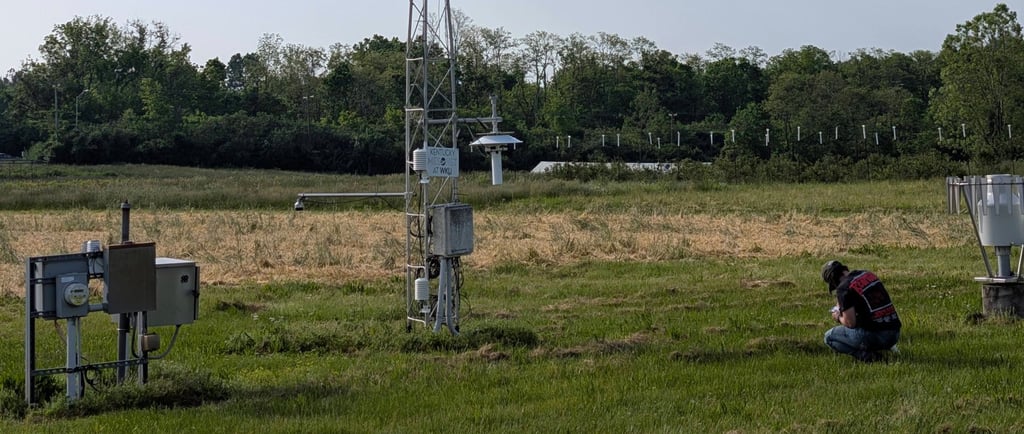First Dirt: The Inaugural CHAOS Lab Field Ops
First field op: boots on, gloves tight, and tick-repellant thick enough to stop time. We hit the dirt with Donna Robinson to grab radon readings and pulled our first CHAOS Lab microbial samples straight from Kentucky soil. No grants, no glory—just raw science, loud and dirty, the way we like it.
FIELD OPSDR. WASHBURNCHAOS LABFERAL SCIENCE
5/21/20252 min read
Field op uniform: Beartooth concert tee, Camp Crystal Lake hat, and motojeans layered in so much tick repellant I could probably repel a small army. Because I may love feral field science, but I will not get ticks. And if there’s data to chase, you better believe I’m showing up field-ready—with gloves on, vials prepped, and zero patience for nonsense.
Last week marked a major first: the CHAOS Lab officially hit the field.
No, it wasn’t a deep karst cave or radon-soaked mine shaft (yet). But it was ours. Our first mission. Our boots in the dirt. Our data. We rolled out alongside the KGS Geologic Mapping Group, joining Geologist II and doctoral badass Donna Robinson in a zone just outside Lexington, where she was collecting radon soil gas measurements. While she read the Earth’s breath, we got our hands dirty and pulled the very first microbial soil samples under the CHAOS name.
First dirt. First data. First drop of feral sweat science.
This wasn’t a grant-funded spectacle with media coverage and catered sandwiches. This was guerrilla collaboration—spawned from hallway convos, mutual respect, and the same unshakable drive to get the work done. We didn’t wait for a budget or a green light. We packed our kits, loaded the gear, and ran toward the science with open eyes and field vests full of caffeine and conviction.
Yes, the site was local. But impact doesn’t need altitude. Every step sets the tone. And this? This was the starting riff.
From here, CHAOS expands outward—into the fractured limestone heart of Kentucky, into abandoned mines and hypersaline springs, into zones no one thought to sample and biohazards most won’t touch. We’re chasing the microbes no one asked about and the data no one else is looking for, because we know the secrets are buried in the messy places.
Science doesn’t have to be polished. It doesn’t need to wear khakis and smile for the camera.
Sometimes it roars. Sometimes it drips cave mud onto your spreadsheets.
And sometimes it starts with a Beartooth shirt and a bucket of dirt.
We said we’d bring the chaos.
Now we’ve got the soil samples to prove it.
First dirt down.
Next stop? The edge.


Feral scientists unite.
